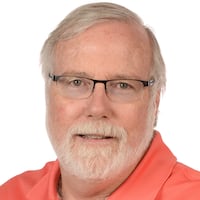The Most Interesting Man in Golf is also the hottest player in golf, his game sometimes appearing to reach close to 373.5 degrees Kelvin.
Warning: When the topic is Bryson DeChambeau, there is the temptation to overreach on the scientific references. In other words, to fake your way through it. Think of writing a DeChambeau story like an eighth-grade science project.
With a head-full of numbers and theories stuffed beneath the Ben Hogan lid, and a bag-full of clubs cut to identical length, the 24-year-old DeChambeau comes to East Lake and the Tour Championship this week as No. 1 in your FedEx Cup points standings. The only player other than Jack Nicklaus, Tiger Woods and Phil Mickelson to win an NCAA Championship, a U.S. Amateur and at least three PGA Tour events before the age of 25 is really hitting his stride. DeChambeau won the first two playoff events leading into the Tour Championship (bringing his career total of Tour wins to four), before acknkowledging a bit of fatigue and finishing T-19 in last week’s BMW Championship.
Bobby Jones, the legend who grew up on East Lake once said, “Your swing is your best when you have the fewest things to think about.”
DeChambeau, on the other hand, can’t stop thinking about stuff. Lately, he’s been talking about getting electroencephalogram readings before and after a round to measure his brain waves in an attempt to “get myself more into a parasympathetic response, which is more of a restful state – sympathetic response is a stress state.”
For the off week between the BMW Championship and the Tour Championship, where other players may go in search of various oxygen- and enjoyment-rich environments for a few days, DeChambeau told Golf Digest that he would venture to high-altitude Colorado to work on his “oxygen depletion.”
This week, the return of Woods will be the riveting story of the Tour Championship.
Justin Thomas and his quest to become the first back-to-back FedEx Cup champion will be the story for the hard-core, competitive types.
And DeChambeau, well, he’ll certainly appeal to the biomechanical engineers in the gallery. Watching him play this week actually may be worth three credit hours at Georgia Tech, who knows?
When he broke into pro golf in 2016, the SMU physics major was a curiosity as much as a phenom. He was the kid who built his swing upon the tenets of a 1969 book entitled “The Golf Machine,” which is the kind of instructional work that would be especially helpful if Euclid came back and wanted to take up the game.
He was the kid who worked on building one kind of swing with one length of golf club – 37.5 inches, about the length of the standard 7 iron – while everyone else’s irons varied in length according to loft. And that swing took on a repetitive, piece-by-piece mechanical look rather than a natural, athletic fluidity. One that came only as a result of tireless practice – DeChambeau established himself early as one of the real grinders out there.
He is the one who once said, “I don’t play golf for money. I play golf to execute that shot, the beautiful shot that everybody adores. That’s why I think we all play golf.”
It is but his nature to be absorbed by the science and the engineering of life. DeChambeau remembers long hours of his childhood spent constructing Lego mansions and solving puzzles. When he and some young friends started playing pingpong, “We bought a robot - not kidding - and we got a robot where this thing would shoot out the ball, different velocities, and different spin rates,” he said in one interview earlier this year.
His methods hardly created an instant revolution. He played in 10 events in 2016, and missed the cut in half of them. The following year, in the 24 events before his breakthrough victory at the John Deere Classic, he missed 15 cuts (eight in a row at one point).
With victories at the Memorial those two events in the playoff rotation – the Northern Trust and Dell Technologies – DeChambeau has won nearly $8 million this season (and stands to possibly more than double that this week). He has risen to No. 8 in the world rankings. And the more he wins, the smarter DeChambeau sounds.
Asked if he would ever consider adopting any of DeChambeau’s techniques now, Australia’s Marc Leishman said, “As far as his clubs go, the one length – possibly. I’m not going to say I didn’t think about it after he won two times in a row. It just gets you thinking, how far would your clubs go, how would it feel pitching with a 7-iron-length lob wedge?
“Definitely, I thought about it. It’s not something I’d do midseason. But as far as all the other stuff that he does, my head would definitely explode if I did that. There’s not much that goes through my head and that would be way too much. It certainly works for him.”
DeChambeau’s innovative mind has run afoul of the lords of golf a couple of times already. His use of a protractor (also known as a drawing compass) to determine what he called “true pin locations” was disallowed this summer. In 2017, a putter he experimented with while employing a so-called “side-saddle” stroke was ruled non-conforming. This is how a person gradually enters the territory of misunderstood genius.
He’ll have to bring all his surveying skills to bear this week, for as a Tour Championship first-timer, DeChambeau has never played East Lake. His little book of formulas and gradients will be sorely tested.
Making it to the Tour Championship is certainly an enriching experience, one that DeChambeau termed, “everybody’s dream out here, one that was a big goal of mine.”
But his ambition is as restless as his mind. “Once I kind of locked that up, I moved on, and I wanted to play well in the majors. I didn’t do that well this year in the majors (T-38 Masters, T-25 U.S. Open, T-51 British Open, missed cut PGA Championship).
“Next year it’s going to be a big task for me to try to figure out why I didn’t play my best in the majors this year and correct that.”
Often, it seems DeChambeau is allergic to giving the trite, cliched response to any kind of question thrown his way. And when that question deals with his outside-the-tee-box thinking, he can go wandering in the weeds for paragraphs at a time.
Maybe some of that is just to play an amusing, if simple, game of Stump the Sportswriter. “I think he phrases stuff differently than he need to at times,” Jordan Spieth said with a smile (Spieth did not make the East Lake cut this year).
And maybe some of it is to sew confusion, to put out a hail storm of techno-babble to obscure and protect some of his important trade secrets. “About 90 percent of the information that I have is proprietary and we will not let anybody know,” he said. “That (other) 10 percent, I love throwing out there and giving everybody a little thought of something that’s a little different and unique.”
A recent sampling of DeChambeau utterances only raised his ranking as a singular voice in professional golf.
Asked if he was a believer in momentum, if, given the volatile nature of the golf swing, there is real carry-over from week to week, he said, “In physics, I believe in momentum. But also in life I believe in momentum, as well. There absolutely is. And it relates to the brain and how the brain is working based on positive feedback from the environment. If you get positive responses and you execute shots and are making putts and stuff like that, you're going to be positive in everything you do, no matter if a bad shot happens.”
Asked about how good he believes he can be, asked about his competitive ceiling, he said, “I don’t know if there is a ceiling because we can always fine-tune things little by little to a lower tolerance level.
“I look at the game of golf as a range, not as a standard deviation, because that one spot you hit out of standard deviation could affect you tremendously. I can’t have that. I’m always trying to take account of what the range is and decrease that and just understand all the variable that are around it that can influence what that range is going to be.”
Translated: There is always some part of DeChambeau’s game that can be scientifically or mathematically adjusted, so long as his devotion to this uncommon approach doesn’t dim. There is always another answer to be found through the rigors of physics.
Because, as we all suspected, it is as DeChambeau says, “Golf is Newtonian.” (Just insert knowing nod here and move on).
About the Author
The Latest
Featured



